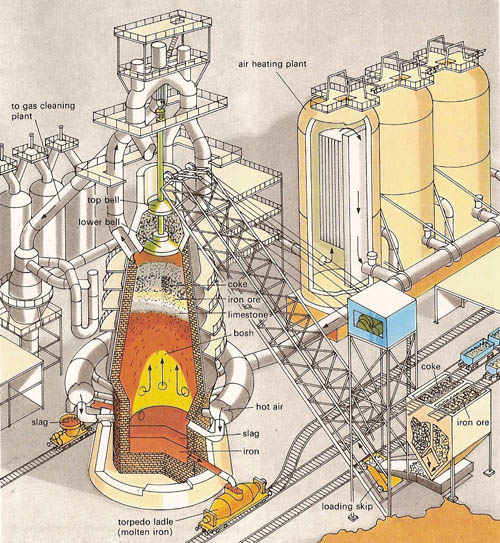blast furnace

The principal components of a medium-scale blast furnace comple.
A blast furnace is a cylindrical smelting furnace in which a blast of hot, high-pressure air is used to force combustion. Blast furnaces are used mainly to reduce iron or pig iron, and also for lead, tin, and copper. It consists of a vertical, cylindrical stack surmounting the bosh (the combustion zone) and the hearth from which the molten iron and slag are tapped off.
Modern blast furnaces are about 30 meters high and 10 meters in diameter, and can produce more than 1,800 tonnes per day. Layers of iron oxide ore, coke, and limestone are loaded alternately into the top of the stack. The burning coke heats the mass and produces carbon monoxide, which reduces the ore to iron; the limestone decomposes and combines with ash and impurities to form a slag, which floats on the molten iron. The hot gases from the top of the stack are burned to preheat the air blast.


